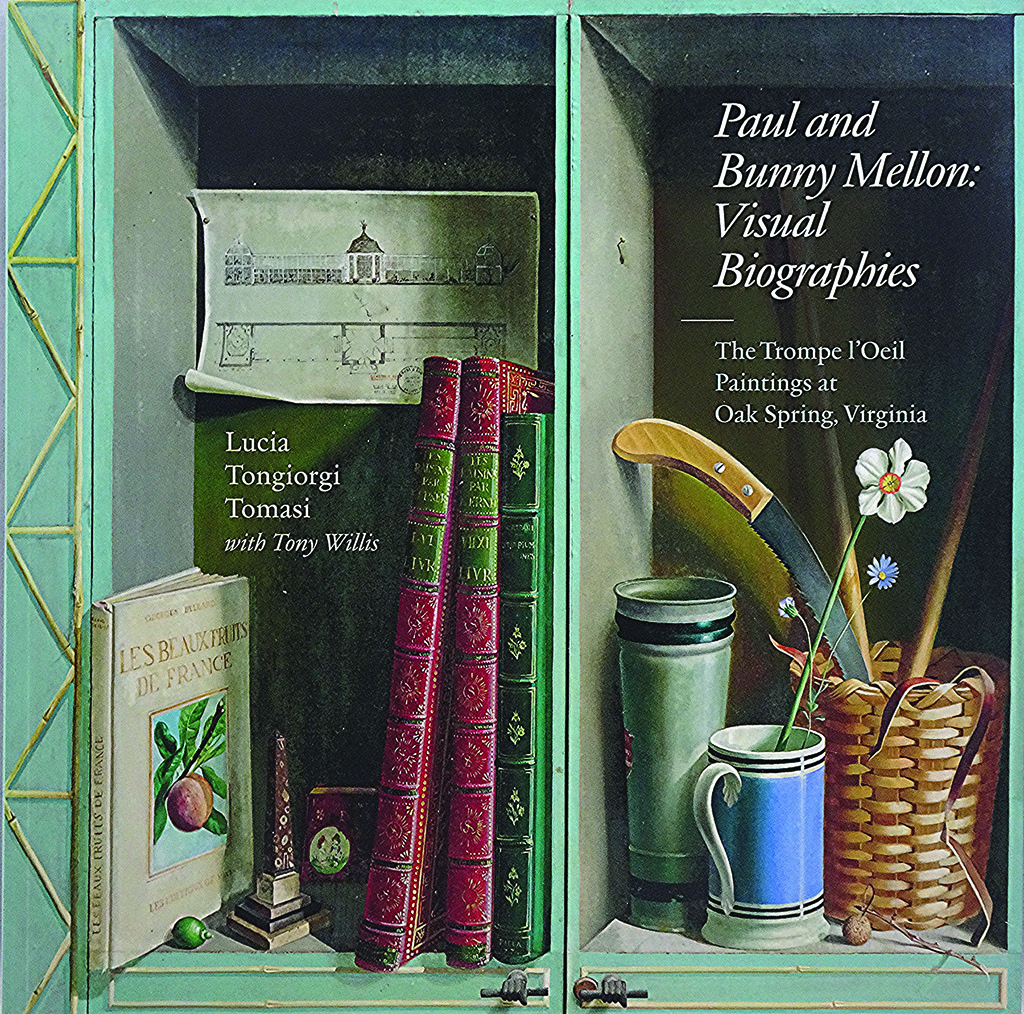Paul and Bunny Mellon: Visual Biographies

The Trompe l’Oeil Paintings at Oak Spring, Virginia
Written by Richard Hooper | Photos reproduced from the “Paul and Bunny Mellon: Visual Biographies“
The recently published book, “Paul and Bunny Mellon: Visual Biographies — The Trompe l’Oeil Paintings at Oak Spring, Virginia,” by Lucia Tongiorgi Tomasi and Tony Willis, introduces and examines a little-known artistic interest of the Mellons. It presents their collection of trompe l’oeil paintings, describes the historical background of the genre, and displays with delightful detail two such works commissioned by the Mellons.
The genre is a mind bending-encounter wherein a two-dimensional painting deceives the eye into believing it is seeing objects from the three-dimensional world. It is both a trick and a treat when the viewer’s mind, upon realizing the deception, reinterprets the illusion back into the reality of a flat plane.
The term, trompe l’oeil, was coined by the French in the 19th century, but the method of painting originated much earlier. The book recounts an amusing account of artistic accomplishment in this method from between the fourth and fifth centuries BCE. The technique has been used in rooms painted with flat architectural details that appear as real columns and moldings. Shelving and niches are prime devices for staging books and objects that beg the viewer to lift up in one’s hands.
The open cupboard doors in the greenhouse pavilion.
The historical background is illustrated with examples from various museum collections, including pieces that were donated by the Mellons. Among the numerous examples shown in the book that are still housed at Oak Spring are two paintings created around 1614 by the Florentine artist Gerolamo Pini. They are of highly detailed, flowering plants with occasionally alighted insects. Each painting has a rolled sheet of paper or parchment with curled edges identifying the plants written out by hand. The sheets (one with a housefly on it ready to buzz off if disturbed) are pinned to the canvases. It is all, however, very high trompe l’oeil.
Of the two-troupe l’oeil works commissioned by the Mellons, the first was installed in the late 1950s and was created to hide the television in the living room. It was a pair of cupboard doors painted as shelving displaying books and a variety of other items, some of which cascade over, or are pinned onto, the front edge of the shelves, thereby enhancing the illusion. It was the work of an Englishman, Martin Battersby – artist, set designer, and author of several books on art and style, including one on the subject of trompe l’oeil.
The book cover showing a detail from one of the trompe l’oeil walls in the greenhouse pavilion.
The second commission, executed by French artist Fernand Renard, is the interior of the pavilion that anchors the two greenhouse wings of Bunny Mellon’s conservatory. Believed to have been painted between 1959 and 1960, all four walls incorporate trompe l’oeil, object-filled shelves. The one wall not pierced by a doorway is completely fool-the-eye shelving with a center section that opens up to a workspace counter and sink. Along with images of all four completed walls, this chapter includes preliminary studies of the project, documenting its evolution.
Left: Trompe l’oeil painting hiding the television. Right: Painting by Gerolamo Pini created around 1614.
Along with biographical backgrounds of Paul and Bunny Mellon, this skillfully researched and lavishly illustrated work adds a new and delightful dimension to the artistic interests of the Mellons. It is available online (along with other Oak Spring publications) at oak-spring-garden-foundation.square.site. ML
Published in the October 2020 issue of Middleburg Life.





